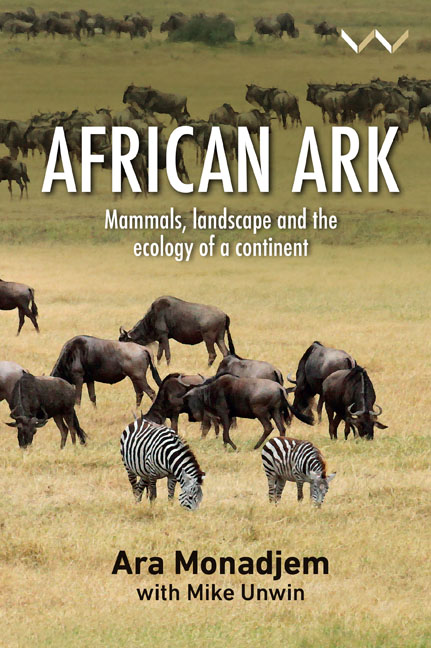Book contents
- Frontmatter
- Dedication
- Contents
- List of Plate Photographs
- List of Figures and Tables
- Acknowledgements
- Foreword
- Preface
- Chapter 1 A Continent of Plenty
- Chapter 2 The Species Conundrum
- Chapter 3 The History of Africa’s Mammals
- Chapter 4 Islands as Species Factories
- Chapter 5 Evolution on the African Mainland
- Chapter 6 Giant Mammals Shaping the Landscape
- Chapter 7 A Place for Every Species
- Chapter 8 Fluctuating Populations
- Chapter 9 The Human Factor
- Chapter 10 The Sinking Ark?
- Glossary
- Notes
- References
- Recommended Reading
- Index
Foreword
Published online by Cambridge University Press: 29 November 2023
- Frontmatter
- Dedication
- Contents
- List of Plate Photographs
- List of Figures and Tables
- Acknowledgements
- Foreword
- Preface
- Chapter 1 A Continent of Plenty
- Chapter 2 The Species Conundrum
- Chapter 3 The History of Africa’s Mammals
- Chapter 4 Islands as Species Factories
- Chapter 5 Evolution on the African Mainland
- Chapter 6 Giant Mammals Shaping the Landscape
- Chapter 7 A Place for Every Species
- Chapter 8 Fluctuating Populations
- Chapter 9 The Human Factor
- Chapter 10 The Sinking Ark?
- Glossary
- Notes
- References
- Recommended Reading
- Index
Summary
Africa is a hugely diverse continent, with a rich and unique assemblage of plants and animals. This exciting book celebrates Africa's biodiversity, focused on how this diversity has evolved on the continent. The book concentrates on mammals of Africa, providing fascinating facts on how they interact within the African landscape. It investigates how the megafauna shaped the many ecosystems and landscapes through nutrient cycling, landscape modification and interactions between species. Special attention has also been given to small mammals, a group of animals that includes the world's two most species-rich mammal orders, namely Rodentia (mice, rats, mole rats, springhares, squirrels and porcupines) and Chiroptera (insect- and fruit- or nectar-eating bats), in many cases, some of the least-known mammals. Often with high densities of up to 300 animals per hectare, small mammals are a major component in the diet of carnivores, raptors and reptiles, and in many cases provide ecosystem services such as pollination. The book also investigates the negative impact of certain mammal groups in terms of disease and agricultural pests. The importance of mammals is well documented, as they play a vital role in ecosystem functioning and are in many cases important indicators of habitat integrity. What this book does is profile Africa as the last truly diverse continent left in terms of mammals and their evolution. It also investigates how this incredible diversity has evolved with humans. The role of competition and predation in structuring mammalian communities over time is also investigated, including how different habitats and niches have led to changes in speciation and how different species can coexist in African savannas.
African Ark is a visibly fresh approach to the process of how species are created, through independent, evolutionary pathways, when isolated from each other over time. It affords one the opportunity to understand the relationship between different organisms and their classification. The book investigates the impact of colonisation events, as well as radiations and speciation, specifically on islands and the mainland. Ara Monadjem delves into the unique details around barriers to movement, which often lead to divergence. Topics such as factors affecting abundance, life strategies and mammal demography are also discussed. This work also profiles the many threats facing Africa's mammals and provides thoughtful suggestions on how landscapes outside formal conservation areas can be protected across the continent.
- Type
- Chapter
- Information
- African ArkMammals, Landscape and the Ecology of a Continent, pp. xxi - xxiiPublisher: Wits University PressPrint publication year: 2023

